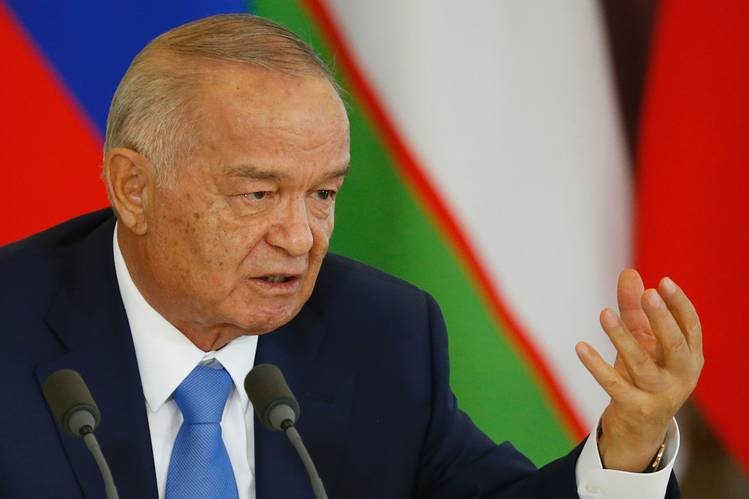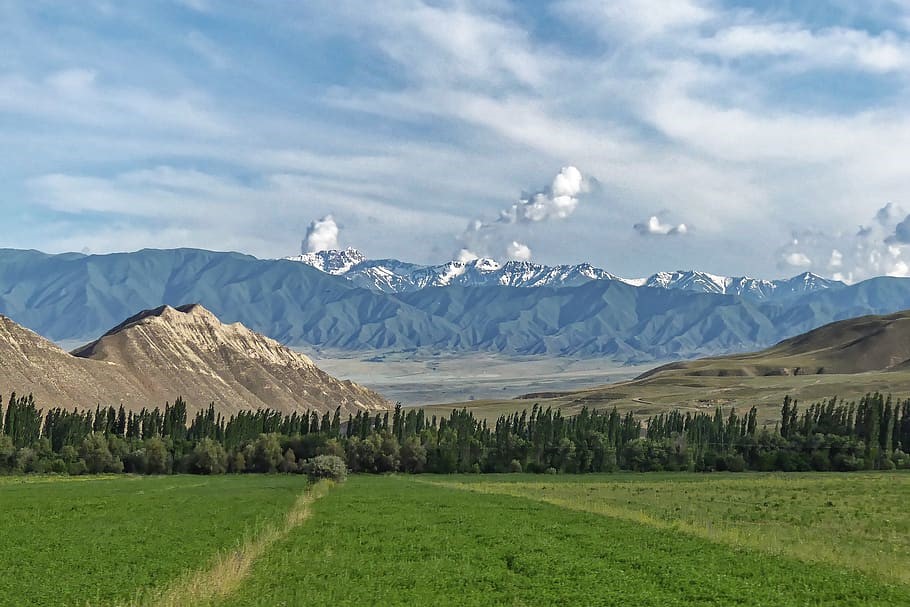Strategic Datalink no. 92, October 2000
Canadian Institute for Strategic Studies
Poorly known today, Uzbekistan could once have justifiably claimed to be the center of the world in an earlier age. A place of Islamic learning and pilgrimage, the region spawned generations of great conquerors from its dominant position on the great Silk Road that connected the economies of Asia, Europe and the Middle East. The decline of this great trade-route was followed by Russian conquest and annexation between 1868 and 1876, and Uzbekistan entered a long sleep under Russian and Soviet rule, until the Soviet collapse in 1991 thrust independence upon the completely unprepared Soviet republics of Central Asia.
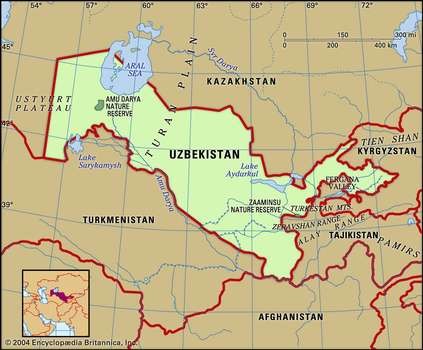 Uzbekistan, like its post-Soviet neighbors in Central Asia, remains an experiment in state-building. Despite a rich and ancient heritage, these nations (Uzbekistan, Turkmenistan, Kazakhstan, Kyrgyzstan and Tajikistan) have no tradition as independent self-governing entities, and remain torn between Soviet-style authoritarianism, emergent capitalism, ethnic nationalism, Slavic separatism and resurgent Islam. [1] The modern borders are the result of Communist gerrymandering designed to divide ethnic groups and create weaknesses within each of the republics. New pressures arising from Russian post-colonial politics and the growth of militant Islamist groups are threatening the security and stability of several Central Asian nations already on the verge of economic and environmental collapse. At the centre of this incipient turmoil is the nation of Uzbekistan, an aggressive would-be regional power with a population of 25 million and an army of some 50,000. [2] Uzbekistan’s direction will play a major role in determining the success or failure of the Central-Asian state-building experiment.
Uzbekistan, like its post-Soviet neighbors in Central Asia, remains an experiment in state-building. Despite a rich and ancient heritage, these nations (Uzbekistan, Turkmenistan, Kazakhstan, Kyrgyzstan and Tajikistan) have no tradition as independent self-governing entities, and remain torn between Soviet-style authoritarianism, emergent capitalism, ethnic nationalism, Slavic separatism and resurgent Islam. [1] The modern borders are the result of Communist gerrymandering designed to divide ethnic groups and create weaknesses within each of the republics. New pressures arising from Russian post-colonial politics and the growth of militant Islamist groups are threatening the security and stability of several Central Asian nations already on the verge of economic and environmental collapse. At the centre of this incipient turmoil is the nation of Uzbekistan, an aggressive would-be regional power with a population of 25 million and an army of some 50,000. [2] Uzbekistan’s direction will play a major role in determining the success or failure of the Central-Asian state-building experiment.
The mounting crisis in Central Asia has prompted a flurry of diplomatic activity and the formation of new and often unlikely security alliances. The Sunni Islamist threat has prompted cooperation between Russia, the US, Israel, China and Turkey, with increasing input from India and Shi’ite Iran. With a $8 billion Western investment in petroleum projects, the US has taken a sudden interest in the region, sending Secretary of State Madeleine Albright and a number of FBI and CIA officials with $9 million to fight terrorism. China has turned against its former Taliban allies in Afghanistan, in part for allowing Uyghur Muslim separatists from Western China to train in Islamist bases within Afghanistan. [3] This year’s meeting of the “Shanghai Five” (China, Russia, Kyrgyzstan, Tajikistan and Kazakhstan) had a sense of immediacy as the member nations focused on threats to regional stability from religious extremism, terrorism and drug trafficking. President Karimov of Uzbekistan unexpectedly cancelled a meeting with NATO secretary-general Lord Robertson in order to attend the summit as an observer. Karimov, who formerly affected aloofness towards the Shanghai Five and other regional security groups, has expressed a sudden willingness to join.
Russia Returns
Land-locked Uzbekistan has large natural gas and uranium resources that cannot be exploited without regional stability, and in the mounting crisis requires partners to establish security. Russian-Uzbek relations have steadily improved since the accession of President Putin. Though highly suspicious (like China) of Western economic and military activity in the area, Russian is nevertheless appealing to the West and Israel to join Russia in a campaign against what it views as an international Islamic conspiracy. More specifically in Central Asia, Russia has warned of Islamist plans to create an “Islamic State of Ferghana.” Part of the Russian strategy appears to involve undermining regional organizations sponsored or favored by the United States.
Despite early high expectations in Ankara regarding the opening of Central Asia to Turkish influence and commerce, the post-communist regimes of the region have been reluctant to embrace Pan-Turkism, preferring instead to attempt to carve out new national identities which will prove less threatening to the continued existence of the ruling elites. In recent years, Russian policy towards Central Asia was difficult to define, but lately a philosophy of “Eurasianism” (encompassing common goals between Russia and its Asian neighbors to the exclusion of American interests) has gained favor across the Russian political spectrum. [4] Since the 1999 Tashkent bombings, however, Karimov has steadily moved towards a rapprochement with the Russians after dalliances with NATO and the United States, neither of which have regional forces able to extricate Karimov from a security crisis.
A growing hub for the region’s extensive underground economy, Taliban-ruled Afghanistan serves as a warehouse and conduit for smuggling networks specializing in consumer commodities, weapons and drugs. The profits fund radical Islamic movements of every stripe, many of them operating bases inside Afghanistan. In a break from traditionally impoverished peasants’ revolts of the past, the network of radical Islamists is now largely self-financed. International volunteers from the Caucasus, Central Asia, China, Turkey and the Arab states may be found in Afghanistan’s mujahidin training camps, and have served in the Taliban’s offensive against the Northern Alliance. Russian threatened to bomb Afghanistan earlier this year in retaliation for Afghanistan’s ongoing support for the Chechen rebels and other Islamist formations. Uzbekistan continues to be an active partner with Iran in supplying the opposition Northern Alliance, [5] which includes a force of ethnic Uzbeks under warlord Rashid Dostum. [6]
From Khans to Apparatchiks
After the conquest of Turkestan, Uzbekistan was formed under Tsarist rule from the khanates of Bokhara, Khiva and Quqon. In the Soviet period there was a focus on cotton production in Uzbekistan, a move that was to have drastic environmental repercussions, felt today in the desiccation of the Aral Sea, a crippling drought, and the spread of wind-blown pollutants from chemical fertilizers. Across the border in Kyrgyzstan there are dozens of nuclear waste dumps left by the Russians. Improperly contained, these dumps threaten the entire water supply of the Ferghana Valley with radioactive contamination. The Russians now refuse to provide any of the missing records that could help to stave off this impending disaster.
Political life in Uzbekistan suffered greatly during the Soviet period. Native communist leaders were subject to purges were subject to purges, and decision-making eventually fell into the hands of ethnic Russians and Ukrainians. As a result, there were few Uzbeks with government experience who could step into the administrative void left by the Soviet collapse in 1991, other than a number of highly cautious Uzbek apparatchiks. One such was Communist Party first-secretary Islam Karimov, who continued to rule Uzbekistan through the transition to independence. Karimov appears to have intended to set up Uzbekistan as a regional power independent of Russian influence, closing the Russian bases inside Uzbekistan and dropping out of the Collective Security Pact (the military alliance of the CIS). Internally, Karimov moved quickly to outlaw all potential secular and Islamic opposition. The surviving form of tame official Islam has little appeal to many Uzbeks.
Since the initial conquest, Uzbekistan has harbored a thread of resistance to Russian/Soviet rule. The Pan-Turkish Jadidi and Basmachi movements both failed to establish an independent Turkestan. With their elimination, the Soviets designed the boundaries of the new republic of Uzbekistan in 1925 with an eye to making the republic the dominant core of Central Asia. Included within its boundaries was 90% of the Ferghana valley and the cities of Tashkent, Samarkand and Bokhara. Uzbekistan’s neighbors fear irredentist claims on their territories based on the khanate boundaries. [7] In reaction they complicate matters by withdrawing political representation from the substantial Uzbek minorities within their borders, especially in Kyrgyzstan.
A Central Asian Caliphate?
After nearly a decade of independence, the aging ex-communist rulers of Uzbekistan have yet to develop a taste for political pluralism, as corruption and the short-sighted repression of even moderate expressions of opposition to the regime inspires the growth of Islamic militantism. [8] Leading the radical Islamist movement are the so-called Wahhabis, Salafist members of an austere Sunni Muslim movement inspired by the revivalist teachings of Muhammad ibn ‘Abd al-Wahhab (1691-1765). [9] The movement was introduced into Central Asia from India in the early 19th century, and became strongly politicized in opposition to Soviet policies of official atheism. Islam remained the domain of the same “official” schools of Islam, along with tolerant Sufi schools of thought (especially the Nakshbandi order centered in Bokhara) until the late 1980’s, when Wahhabist missionaries began to enter Central Asia. Islamist activity in Uzbekistan is strongest in the Ferghana Valley, Namangan and Andijan, and has recently spread to the Uzbeks of the Osh and Jalalabad oblasts of Kyrgyzstan. [10] It is this group which today supplies the most militant opponents of the Karimov regime, but the term “Wahhabi” is typically applied by governments throughout Central Asia to anyone who opposes the post-Soviet ruling class, including bandits and other common criminals, thus obscuring the true strength and activities of the movement. [11] Wahhabism is also strongly opposed to Sufi practices, and is frequently the source of much strife in communities where it has been introduced.
The Wahhabist philosophy is mixed in Central Asia to a large degree with Deobandism, a pan-Islamic revival movement developed in India as a reaction to 19th century British imperialism. Deobandism became politically radicalized in modern Pakistan and, in a crude form, came to be the basis of the Taliban system in Afghanistan (along with the traditional Pashtun code, the Pashtun wali). Saudi funding of the Deobandi madrassa-s (religious schools) tended to bring their teachings closer to Wahhabism.
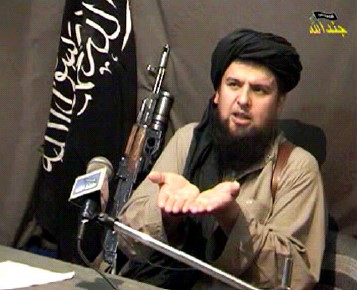 IMU Leader Tahir Yuldash (Ferghana News)
IMU Leader Tahir Yuldash (Ferghana News)
The current leader of the Wahhabist Islamist Movement of Uzbekistan (IMU) is Tahir Yuldash (also known as Tahirjon Yuldashev). [12] As a 24-year-old school dropout, Yuldash found himself the leader of the Namangan Islamic movement in 1991, leading the calls for recognition of Islam as the state religion and the reinstitution of Shari’a law. A short-lived Muslim government in Namangan was repressed by Karimov, but funds soon began to flow in from the Saudi Arabian movement Ahl-e Sunnah for the construction of madrassa-s and other activities. Yuldash escaped from Uzbekistan after the Tashkent bombings of February 1999, and is said to have established his IMU camp in Afghanistan with help from a donation by Osama bin Laden.
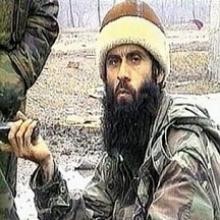 IMU Military Leader Juma Namangani
IMU Military Leader Juma Namangani
In the last two years, the IMU have mounted two campaigns under their military commander, Juma Namangani (also known as Jamabai Khajiev). In the first, in 1999, the militants crossed into Kyrgyzstan from Tajikistan, kidnapping four Japanese geologists (amongst others) for ransom. [13] Namangani’s guerrilla force grew out of the Muslim exile group forced from Uzbekistan in 1992. Having fought for the Islamic opposition in the Tajik civil war of 1992-97, the Uzbeks were left out of the Tajik peace accords, and determined to re-establish themselves in the Ferghana Valley. This year, Namangani’s guerrillas tried to force their way through Kyrgyzstan into Uzbekistan, coming within 100 km of the Uzbek capital of Tashkent. Fierce fighting occurred in several places, in which the rebels demonstrated better training and equipment (anti-aircraft weapons, night-vision equipment, etc.) than did the national security forces, which failed to coordinate their activities. A second wave of kidnappings (mostly mountain-climbing Westerners) took place, though most of the hostages escaped or were released. Uzbekistan’s willingness to bomb IMU targets in Kyrgyzstan and Tajikistan with or without permission has antagonized relations with its neighbors. Karimov, who opposed the Tajikistan peace agreement that gave the Islamist opposition 30% of government posts, has also been accused of sponsoring a short-lived rebellion in northern Tajikistan in late 1998. Uzbek officials have accused the Tajiks of aiding the IMU in their entry into Uzbekistan.
An important addition to the Uzbek Islamist movement is the growing Hizb-ut-Tahrir (Party of Liberation). Although it has its roots in Saudi Arabian reformist Islam, the Hizb-ut-Tahrir broke with the Wahhabis at an early stage in order to pursue a type of Islam more in tune with the modern world. The stated aim of the party is the establishment of an Islamic caliphate in Central Asia. The movement’s secret leadership is protected by a cell structure, and Uzbek authorities have unsuccessfully resorted to mass arrests and torture to expose the party leaders. The growing influence of the shadowy Hizb-ut-Tahrir promises to be an even greater threat to the security of the Uzbek state than the IMU, who can at least be engaged and destroyed in open warfare.
Though Karimov has been vociferous in his public denunciations of a “Wahhabist” hand behind the Tashkent bombings, it is possible that their true source was among certain government officials angered by a new policy governing resource distribution. Regardless, the bombings were used as the pretext for a vicious attack on real and potential opponents of the Karimov regime (Islamic and secular), with thousands of arbitrary arrests and widespread reports of torture. [14] This latest wave of repression is an even more severe version of the disastrous Uzbek crackdown on religion in the early 1990s, which created a pool of thousands of desperate religious exiles available for recruitment by Islamist organizers. Well-trained since in the Afghan and Tajik civil wars, these exiles now pose a small but formidable threat to some of the rather weak militaries of the region. The Uzbek firing-squads nevertheless compound the problem and radicalize moderate Muslims.
Conclusion
In neighboring Tajikistan, the rapprochement between ex-Communists and Islamists has been ineffective in cooping with drought, infrastructure collapse, disease and impending starvation. As Uzbekistan slides into its own economic and environmental collapse it threatens to pull the entire region with it. The military threat of the Islamists is, for the moment, exceedingly small, but the precariousness of the political situation in Central Asia is exposed by the ability of small demonstrations to create mayhem through the political systems of the entire region (the armed IMU group that started the 1999 crisis initially consisted of only 21 men). The presence of an external Islamic threat is being exploited by Karimov, Putin and others to legitimize their centralization of authority and to squash more moderate internal dissent (such as the Islamic Renaissance Party, which expressed an interest in parliamentary democracy). Karimov has repeatedly spurned opportunities to incorporate even moderate forms of Islam into a more democratic political structure. Islamic militancy may also be cynically used by the Uzbek leadership to divert attention from the impending economic collapse of Uzbekistan.
The shallow understanding of Islam displayed by the Uzbek and other regional leaders is a guarantee that the Islamic revival will continue to be mishandled and inadvertently politicized. Meaningful resource extraction from Central Asia also appears unlikely in the present climate, and a dispute over water-sharing has the potential to grow into a multi-state conflict. Anti-terrorism measures and funding, as offered by the United States, cannot alone restore stability to a region that has yet to come to terms with its Islamic identity and remains in dire need of infrastructure, investment and environmental repair. The increasing militarization of the region and its arbitrary borders is also in contravention of Central Asia’s need for economic and environmental cooperation. Unifying elements exist; with the exception of Tajikistan, the majority population of each state enjoys a common Turkic cultural and linguistic heritage. Sunni Islam, which more than any other factor should be a unifying force in Central Asia, is instead proving to be the major source of divisiveness as it is manipulated by authoritarian governments and political-minded religious reformers alike.
Endnotes
- The Turkmenistan government of President Saparmurat Niyazov has attempted, with some success, to stay clear of regional security entanglements. Turkmenistan is ethnically homogenous and, though an undemocratic authoritarian, Niyazov has supported the rebirth of Islamic life and incorporated Islamic leaders into the governance structure.
- Uzbekistan’s ethnic groups consist of Uzbeks (80%), Russians (5.5%), Tajiks (5%), Kazakhs (3%), Karakalpaks (2.5%), Tatars (1.5%), others (2.5%).
- For the Uyghur rebellion, see Andrew McGregor, “Mummies and Mullahs: Islamic separatism in China’s new frontier,” Behind the Headlines 56(4), Summer 1999, CIIA, pp. 4-12.
- See Bruce R Kuniholm, “The Geopolitics of the Caspian Basin,” Middle East Journal 54(4), Fall 2000, pp. 563-64.
- The Northern Alliance consists of the formerly ruling Jamiat-i-Islami of President Rabbani and Defence Minister Massoud, the Jombesh-e-Milli Islami (National Islamic Movement) of General Dostum and two Shi’a factions, the ethnic Hazara Hizb-i-Wahdat Islami (Islamic Unity Party) and the Harakat-i-Islami (Islamic Movement).
- Dostum’s army, like all the other factions in Afghanistan, supports itself through the drug trade. Dostum was accused in September by Tahir Yuldash of fighting alongside the Uzbek government forces against the IMU.
- Uzbekistan’s aggressive attitude towards border delimitation has prompted calls within Kazakhstan for the creation of a military bloc of Central Asian states to oppose Uzbekistan. Kyrgyzstan has also expressed frustration with Uzbekistan’s habit of shutting off gas supplies to express its displeasure with its neighbors.
- The current parliament meets only two or three times a year and is little more than a cheering gallery for President Karimov. A recent proposal to introduce a bicameral legislature gives the appearance of greater democracy, but may actually serve to strengthen Karimov’s position.
- The movement rejects the name “Wahhabi” as idolatrous, preferring instead the term Muwahiddun, or Unitarians. The resolutely monotheist movement follows the Hanbalite interpretation of Shari’a law, strictest of the four schools of Sunni Islamic jurisprudence.
- Uzbeks form about 13% of the population of Tajikistan. Most are concentrated near the Uzbekistan border.
- The Wahhabist movement has also gained many adherents in the Northern Caucasus in the last decade, and has been a prime motivator behind conflicts in Daghestan and Chechnya, where it has not only come into conflict with Russian policies, but also with the more traditional and tolerant Sufi modes of worship practiced in the region. In Chechnya, for example, both President Maskhadov and his enemy, the Russian-appointed puppet-governor Khadyrov, have both felt compelled to issue edicts against Wahhabism.
- The IMU was officially designated as a terrorist organization by the US State Department on May 1, 2000.
- Japan has been criticized for paying a reported $6 million in ransom for the geologists, which inevitably fuelled the kidnappings that followed the next summer. There are also reports of a dispute between Yuldash and Namangani over the division of the ransom.
- Six men were executed in January 2000 for their alleged part in the bombings following a controversial trial with allegations of forced confessions. The men first implicated both Tahir Yuldash and Muhammad Salih, leader of the banned opposition party Erk.


